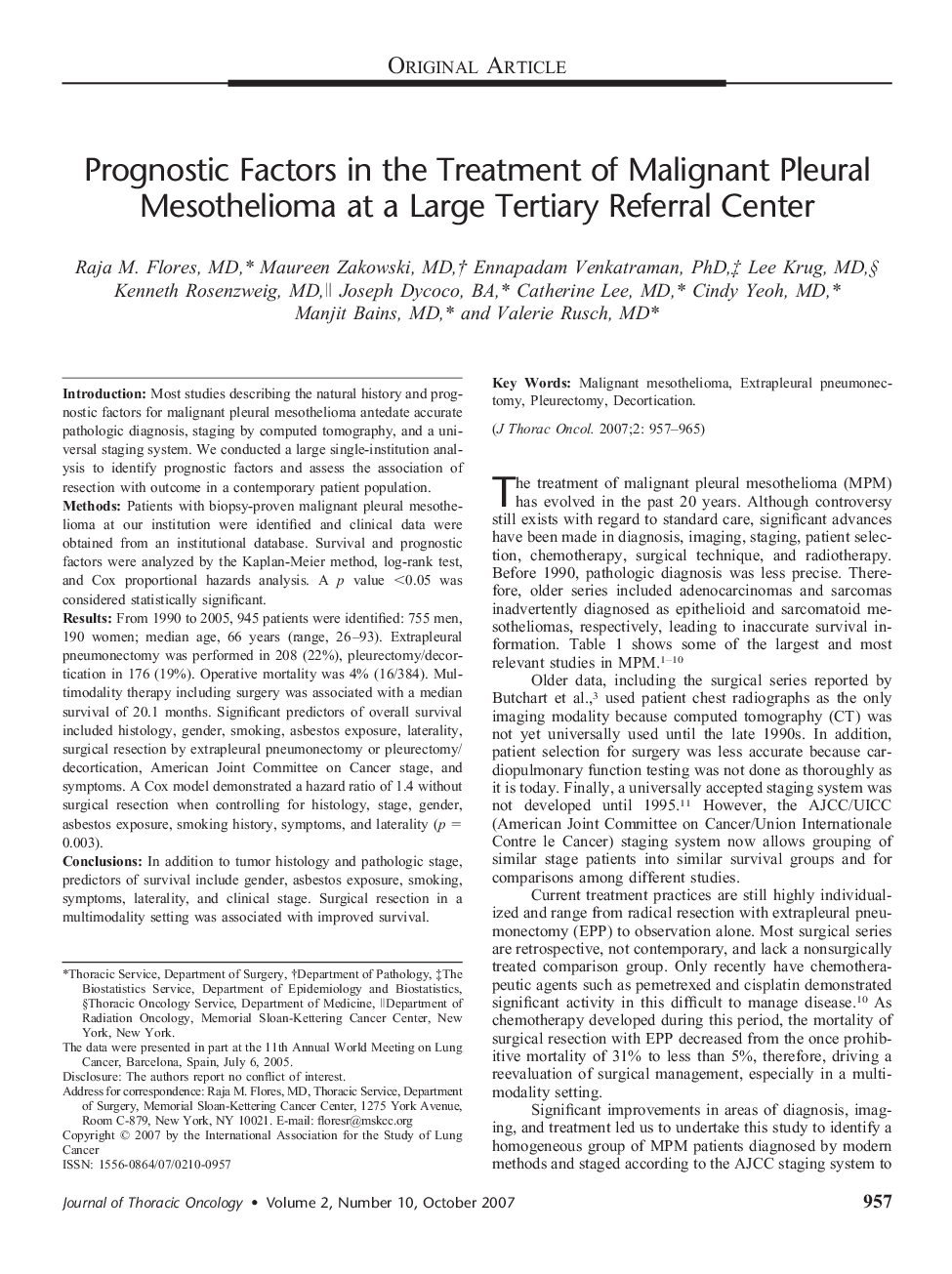| کد مقاله | کد نشریه | سال انتشار | مقاله انگلیسی | نسخه تمام متن |
|---|---|---|---|---|
| 3991319 | 1258767 | 2007 | 9 صفحه PDF | دانلود رایگان |

IntroductionMost studies describing the natural history and prognostic factors for malignant pleural mesothelioma antedate accurate pathologic diagnosis, staging by computed tomography, and a universal staging system. We conducted a large single-institution analysis to identify prognostic factors and assess the association of resection with outcome in a contemporary patient population.MethodsPatients with biopsy-proven malignant pleural mesothelioma at our institution were identified and clinical data were obtained from an institutional database. Survival and prognostic factors were analyzed by the Kaplan-Meier method, log-rank test, and Cox proportional hazards analysis. A p value <0.05 was considered statistically significant.ResultsFrom 1990 to 2005, 945 patients were identified: 755 men, 190 women; median age, 66 years (range, 26–93). Extrapleural pneumonectomy was performed in 208 (22%), pleurectomy/decortication in 176 (19%). Operative mortality was 4% (16/384). Multimodality therapy including surgery was associated with a median survival of 20.1 months. Significant predictors of overall survival included histology, gender, smoking, asbestos exposure, laterality, surgical resection by extrapleural pneumonectomy or pleurectomy/decortication, American Joint Committee on Cancer stage, and symptoms. A Cox model demonstrated a hazard ratio of 1.4 without surgical resection when controlling for histology, stage, gender, asbestos exposure, smoking history, symptoms, and laterality (p = 0.003).ConclusionsIn addition to tumor histology and pathologic stage, predictors of survival include gender, asbestos exposure, smoking, symptoms, laterality, and clinical stage. Surgical resection in a multimodality setting was associated with improved survival.
Journal: Journal of Thoracic Oncology - Volume 2, Issue 10, October 2007, Pages 957–965